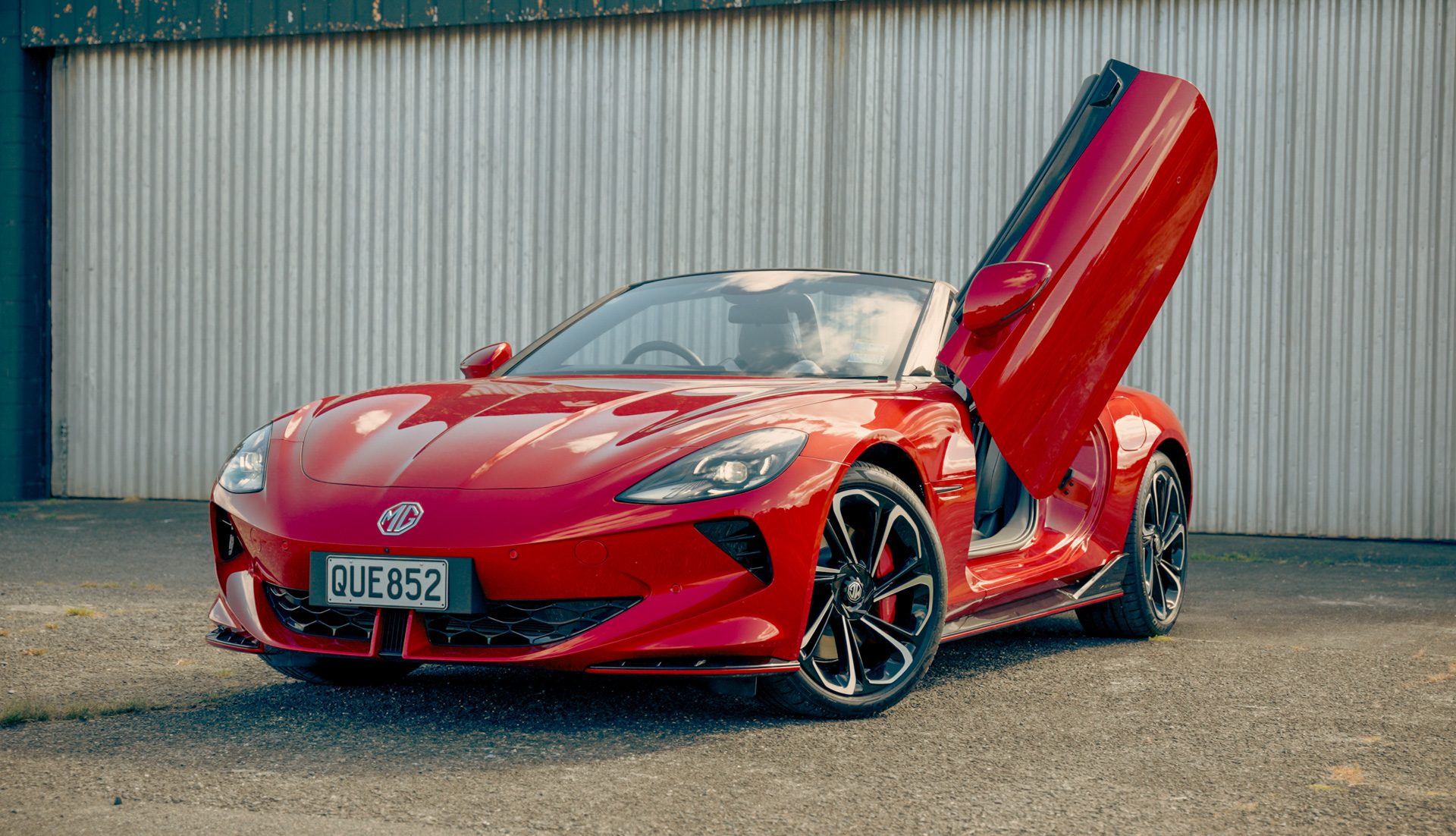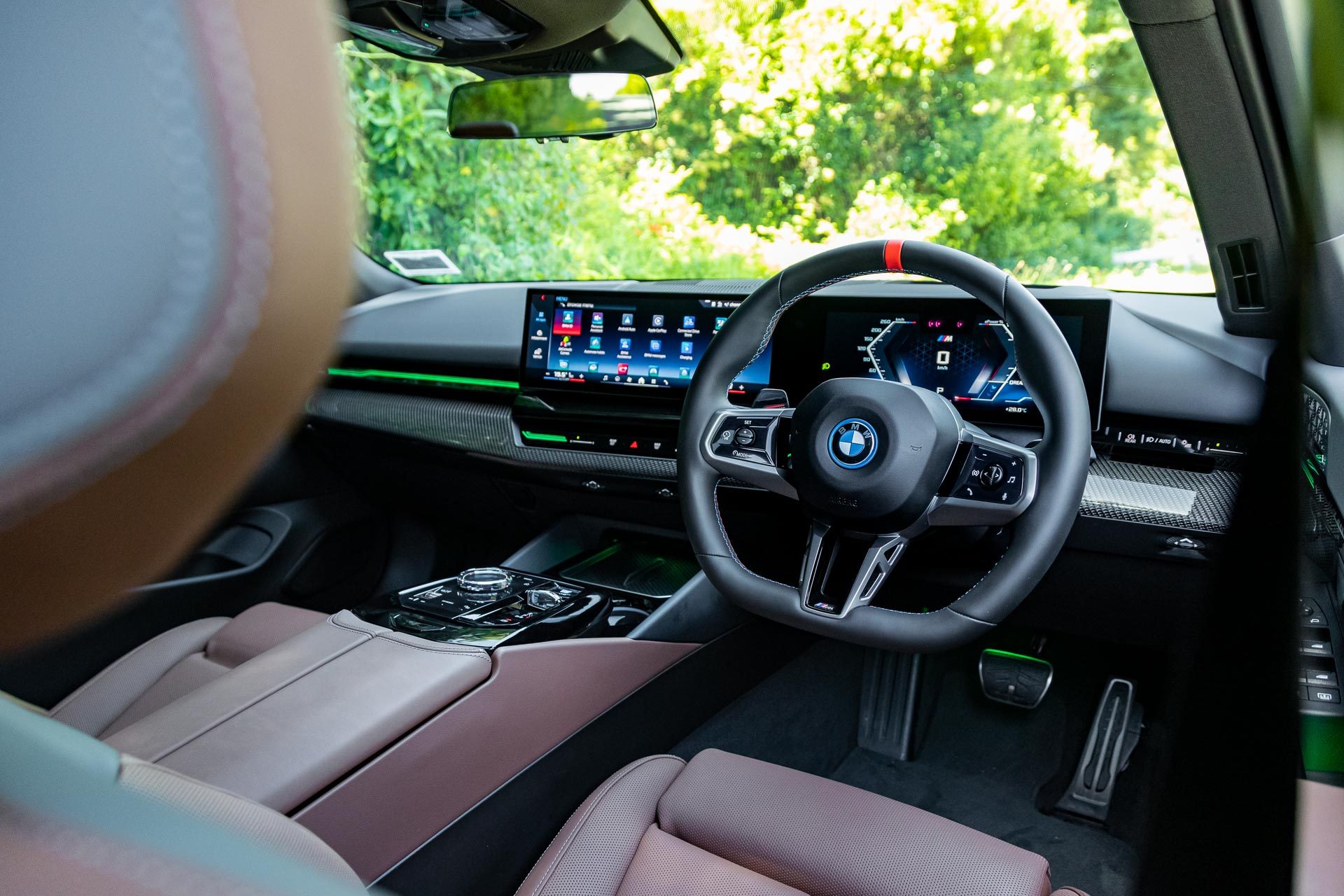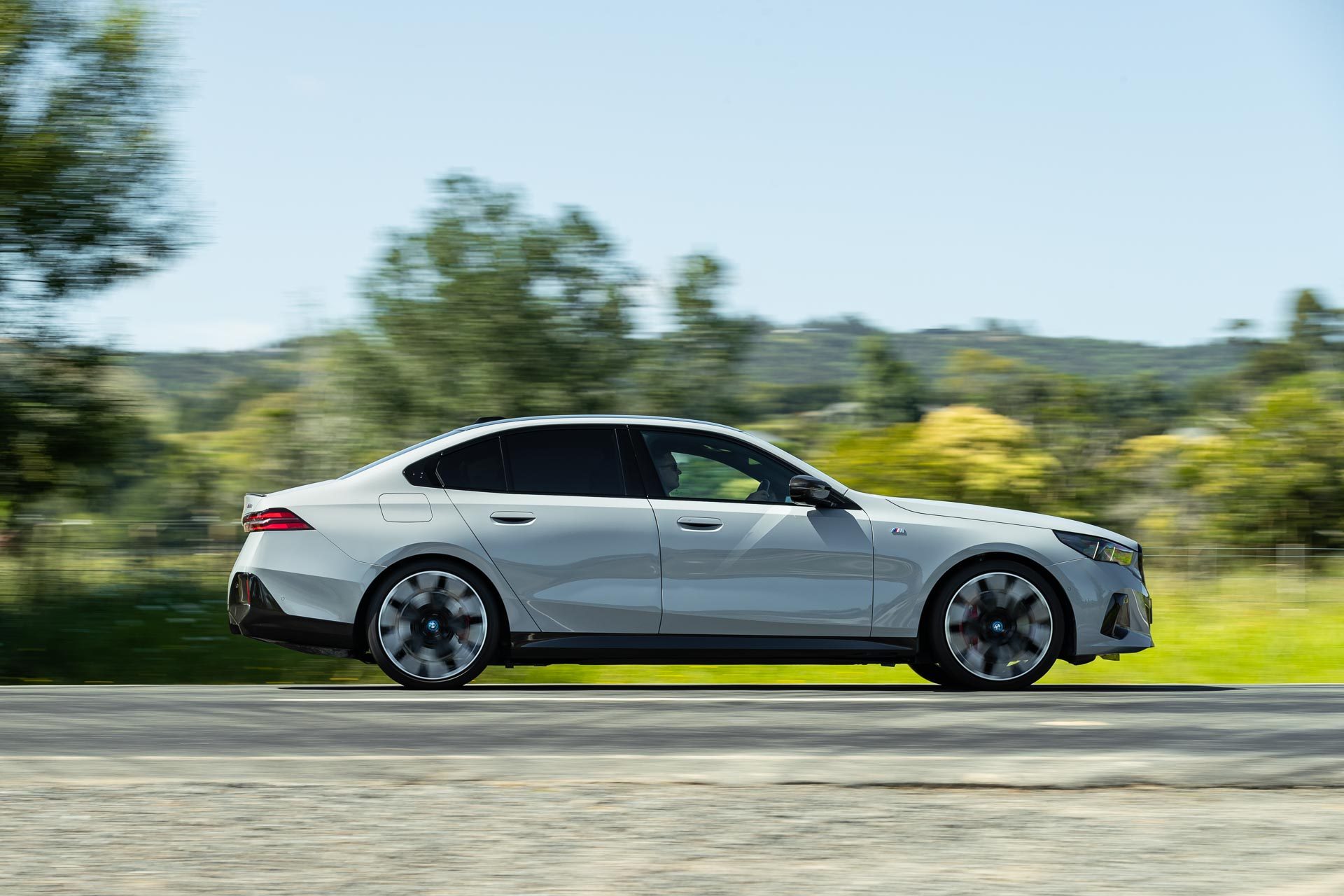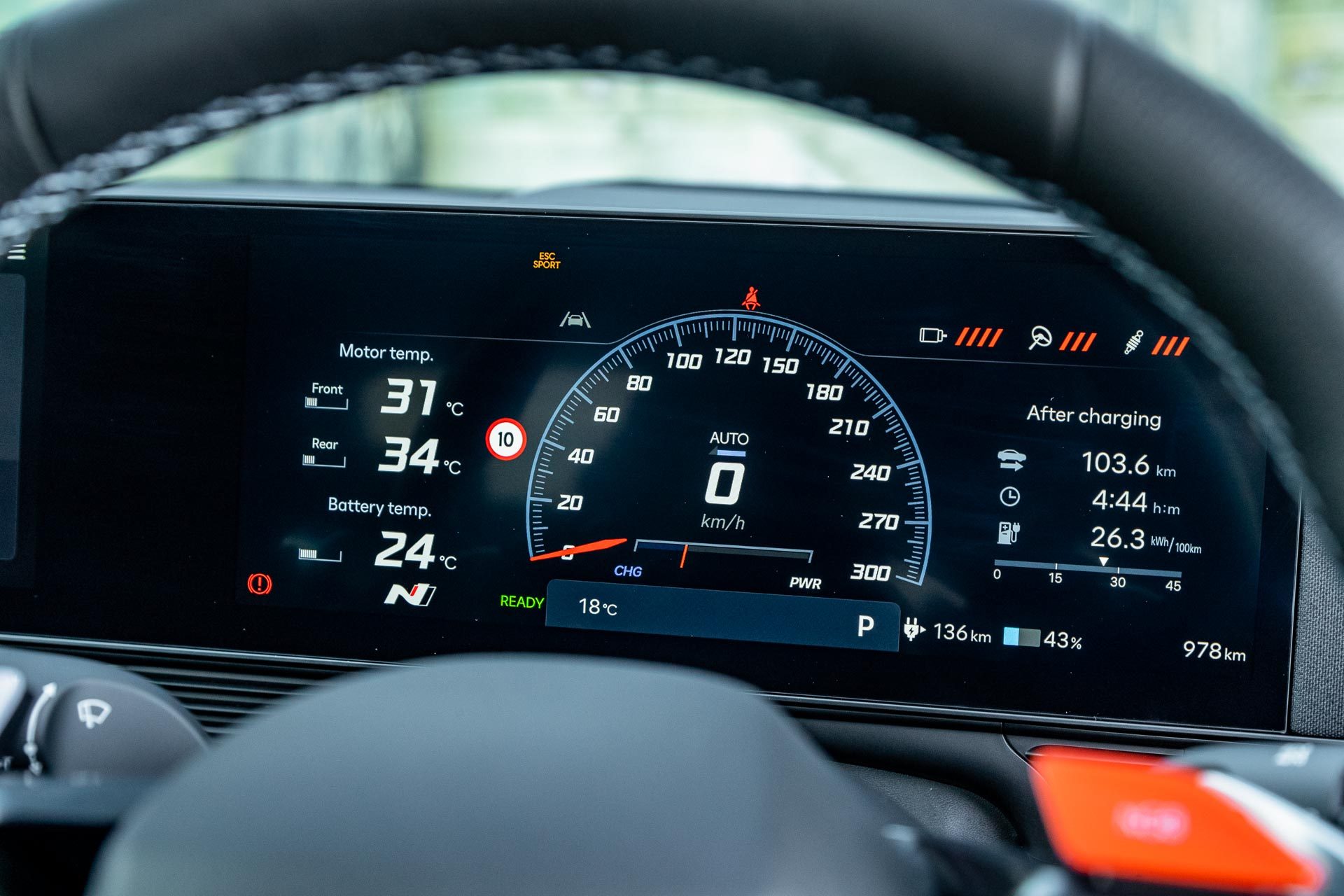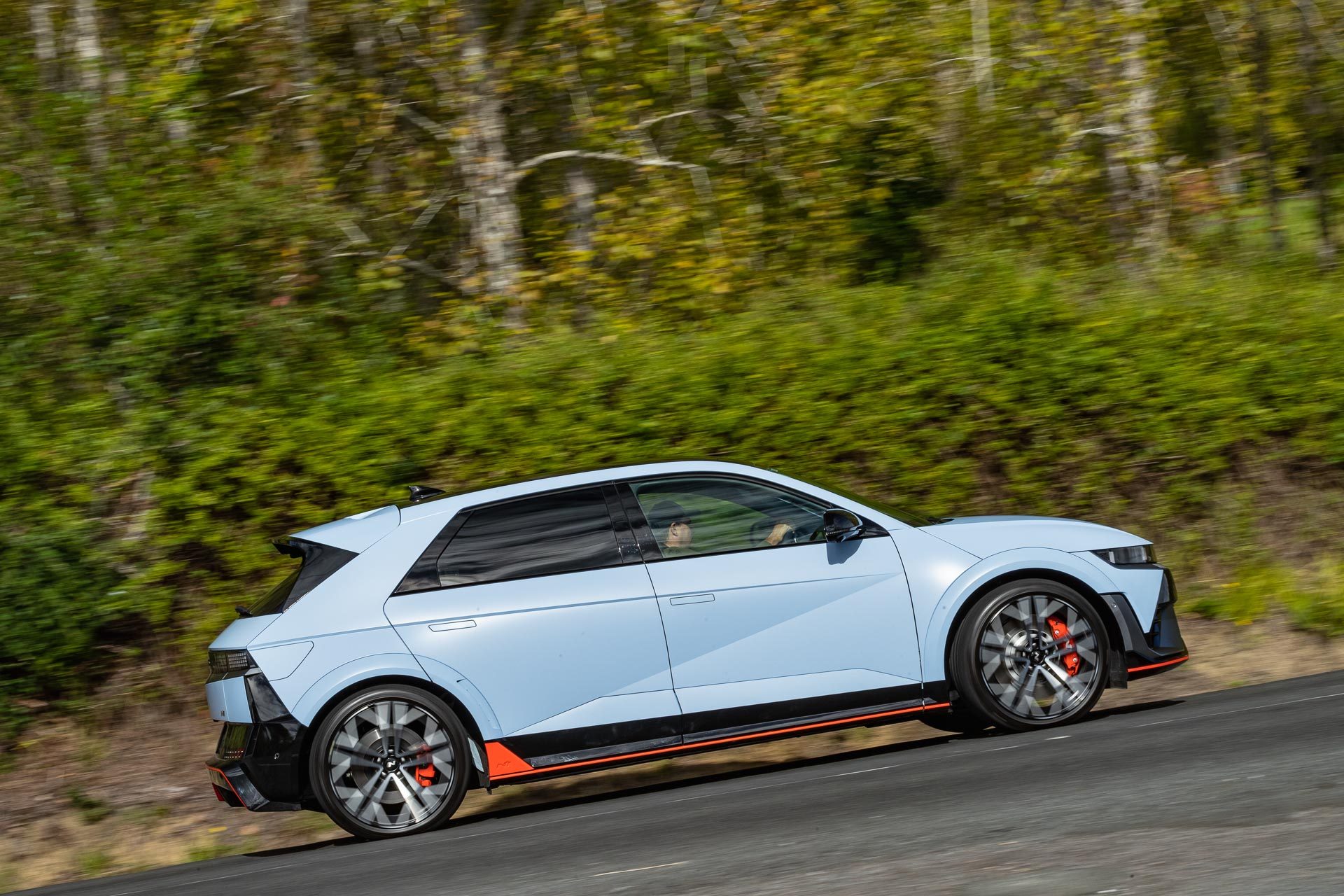Feature article
Best electric cars of 2024 and 2025
Top EVs of 2024 & 2025: the high performance BMW i5, Hyundai's Ioniq 5 N, and the new MG Cyberster convertible.

BMW i5
BMW offers the all-electric i5 in the high-performance M60 variant here in NZ, foregoing petrol, diesel, and hybrid options available in other markets. The M-badged i5 M60 aligns with local buyer preferences for high-power models, mirroring the success of the i4 M50.
With dual motors delivering up to 442kW and 820Nm in Sport mode, the i5 M60 is a powerhouse, capable of launching from 0-100 km/h in under four seconds. Its adaptive M suspension, active roll stabilisation, and rear-wheel steering enhance handling, though its 2.3-tonne weight affects braking performance. The ride remains composed despite large 21-inch wheels, balancing sportiness with comfort.
The interior boasts a digitalised cabin with haptic controls, a responsive touchscreen, and a smart voice assistant. Spacious rear seating and a 490L boot add practicality, though the central hump limits rear occupancy to two adults. Charging rates peak at 205kW DC, but real-world range falls short of the claimed 455-516km, averaging around 350km.
Priced at $196,900, rising to $206,500 with options, the i5 M60 competes with the Mercedes EQE AMG 53 and Porsche Taycan 4S. While thrilling, its weight, range, and digital reliance may deter some buyers.
Hyundai Ioniq 5 N
The Hyundai Ioniq 5 N is a performance EV designed to challenge traditional perceptions of electric cars. Hyundai has engineered the 5 N to mimic the characteristics of an internal combustion engine (ICE) vehicle through software and hardware enhancements. This includes artificial engine sounds, simulated gear shifts and even a ‘shift shock’ effect. The N e-shift mode creates an ICE-like driving experience, while drivers can customise everything from power delivery to suspension firmness.
Performance-wise, it boasts a reinforced chassis, adaptive dampers, a tuned electric steering system, and a sophisticated torque distribution setup. Its electric motors deliver up to 478kW aided by an 88kWh battery. Enhanced thermal management ensures consistent track performance, while 400mm front brakes and regenerative braking provide strong stopping power.
Despite weighing 2.2 tonnes, the Ioniq 5 N handles sharply, with a well-balanced chassis and responsive steering. It retains the practicality of the standard Ioniq 5, offering spacious interiors and a refined ride when needed. Priced at $134,990, it offers performance to rival more expensive European sports cars. Ultimately, the 5 N merges EV refinement with ICE engagement, making it an intriguing choice for both EV fans and skeptical petrolheads.
MG Cyberster
The MG Cyberster is a bold step into the luxury convertible market, combining MG’s value-driven ethos with high performance and striking design. Originally hinted at in 2017 with the E-Motion concept, the Cyberster evolved through various concept stages before becoming a production-ready electric roadster featuring scissor doors, a long bonnet, and modern styling. Despite its futuristic appeal, the traditional MG badge feels somewhat out of place on such a high-tech vehicle.
Priced at $130k, the Cyberster offers remarkable performance, boasting a dual-motor setup producing 375kW and 750Nm. In “Super Sport” mode, it accelerates from 0-100km/h in just 3.2 seconds, rivaling far more expensive performance cars like the Porsche Taycan Turismo 4S. It also offers strong braking capabilities with Brembo brakes and regenerative braking options.
The Cyberster’s 77kWh battery delivers a claimed 443km range, with fast charging available for quick top-ups. The interior features synthetic leather, a three-screen dashboard, and decent practicality, though minor software glitches and interface issues persist. While not a pure track car, its balanced handling and GT-like comfort make it a compelling choice. Overall, the Cyberster is an exciting EV sports car with impressive speed and style.
Author
Other articles you might like
